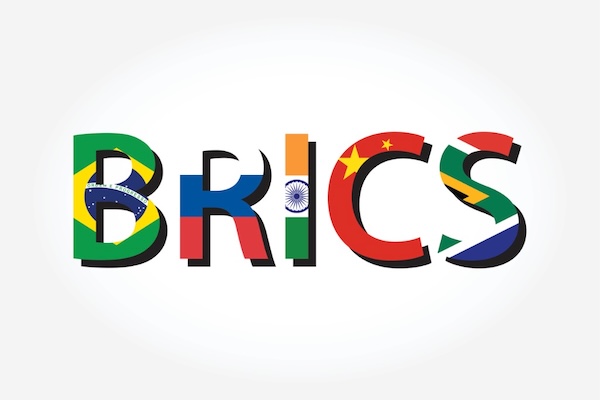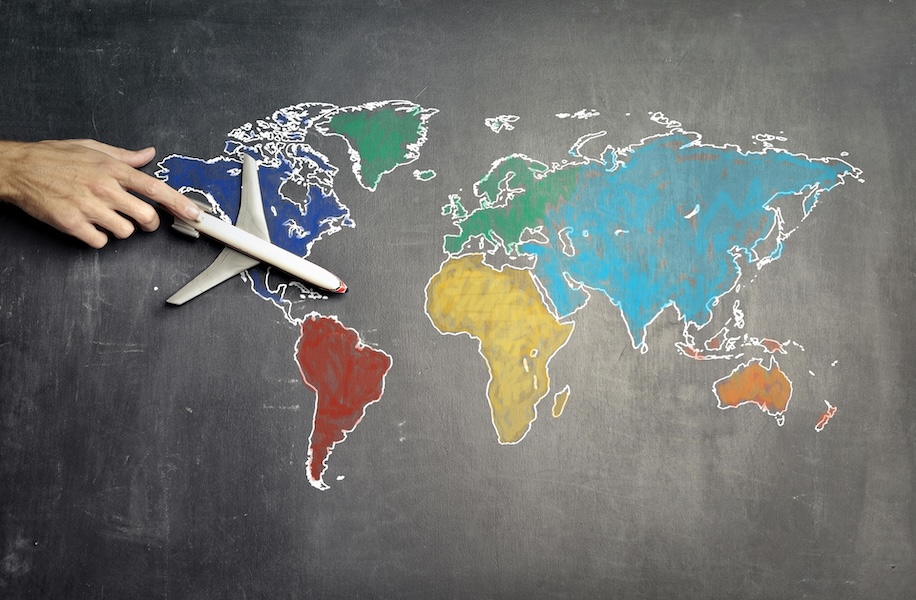
Why the meteoric rise of the importance of web translation? Because the majority of the world’s population does not speak English. In fact, less than a third of the current Internet user base speaks English as a global language. If English is your language, as it is mine, you’re out of luck if trying to make, as Byte Level Research co-founder John Yunker puts it, “a good first impression” on the vast majority of international people. Globalizing your Web site offers an enormous revenue opportunity for your business.
Web globalization, a strategy that conveys cultural, linguistic, and business information to meet the needs of a target audience in an increasingly multicultural and multilingual world is the next imperative for businesses, allowing them to gain traction and relevancy as a means to foster social engagement and enable online purchases. As more and more people access the Internet, English will become less prominent as the language of choice. What’s holding companies back from translating to non-English speaking languages? CEOs typically say it’s because most of their audience only speaks English and they quietly mention budgetary constraints.
That sort of thinking offers a perfect lead into Theodore Leavitt’s concept of “marketing myopia.” Theodore Leavitt, a late marketing professor at the Harvard Business School, says, “Businesses will do better in the end if they concentrate on meeting customers’ needs rather than on selling products.”(1) Marketing myopia is shortsightedness or the inability to see the future. Could that be you when it comes to web globalization? Are you giving customers what they want in the language they want?
Make no mistake. As a CSA Research report puts it, “Companies that are in favor of technology grow nearly three times as fast as companies that have mixed feelings about it or are against it.”(2)
A Web site—or any online social platform, apps included—is a door to the world. “The Internet connects computers, but it is language that connects people,”(3) as Yunker says. Without content customized for different regions, languages, and cultures, a digital presence can seem lacking. Translating your message makes a radical difference in how you get discovered on the web. Whether you think your target audience only speaks English, you lack the resources to translate a Web site, or you believe your products and services are inappropriate for the global marketplace, you are missing out on a huge chunk of business and are most likely leaving a lot of money on the table that will go to competitors who are willing to translate. To conduct business with most of the world, you must speak the language of several of your customers and ensure your Web site appears in the places where they are searching. It can’t be said enough: globalizing your Web site (read more about web globalization) offers an enormous revenue opportunity for your business.
In chapter 15 of my book, Exporting: The Definitive Guide to Selling Abroad Profitably, I discuss why you should design your Web site with the world in mind, the growth of Web globalization, the biggest challenges to Web site globalization, why Web globalization is essential to your Web marketing efforts, and what you can do now to get started. This information applies to translating marketing materials and campaigns on an as-needed basis as well.
Take it a step at a time, budget accordingly, and spend when and where you can. Perspective and a long-term horizon are what you need most, although you’ll probably end up making the same mistakes that the rest of us make when first getting started. That’s OK. We’re in this together.
Caution: A site translated into another language will not compensate for a poorly built English-language Web site. For example, if your English site is lacking in clarity and content, or the e-commerce bells and whistles are broken for your English-speaking visitors, don’t expect a translated version to work any better. So, fix the English site first to get the highest level of awareness and traffic that is possible before putting funds into developing a translated version. Then, when you can afford it, develop a foreign-language version featuring customized content unique to a specific market.
In closing, here are ten things Web site globalization will allow you to do to Increase visitors to your Web site
- Increase your international sales and profits
- Improve your global web performance
- Broaden your reach and support
- Gain global market share
- Improve visitors’ engagement and interactions
- Become a more worldly brand
- Outperform competitors
- Deliver greater impact via an integrated strategy
- Give customers the world over what they need and want
Citations:
1 – “Marketing Myopia,” Theodore Levitt, Harvard Business Review, accessed May 2019, http://hbr.org/2004/07/marketing-myopia.
2 – “Language Service Provider Growth Factors,” Common Sense Advisory, accessed May 2019,
https://csa-research.com.
3 – “Frequently Asked Questions About Byte Level Research and Web Globalization, John Yunker, accessed May 2019,
http://bytelevel.com/about/faq.html.
This article has been adapted from Exporting: The Definitive Guide to Selling Abroad Profitably by Laurel Delaney, published by Apress, 2016. ©Laurel J. Delaney. All rights reserved.












 There are more than 8 billion potential customers in the world looking for your product or service. Are you ready to serve them?
There are more than 8 billion potential customers in the world looking for your product or service. Are you ready to serve them?
17 Comments. Leave new
На этом сайте вы найдёте полезную информацию о лекарственном средстве Ципралекс. Вы узнаете здесь информация о показаниях, дозировке и возможных побочных эффектах.
http://QaziAsifPakistan.jocc.xyz/category/website/wgI2vZFhZf5rbhFqBTP7G0CD1
Здесь вы найдёте лучшие онлайн-автоматы на платформе Champion.
Выбор игр содержит проверенные временем слоты и актуальные новинки с яркой графикой и уникальными бонусами.
Всякий автомат оптимизирован для максимального удовольствия как на компьютере, так и на мобильных устройствах.
Даже если вы впервые играете, здесь вы сможете выбрать что-то по вкусу.
приложение champions
Автоматы доступны без ограничений и не нуждаются в установке.
Дополнительно сайт предусматривает программы лояльности и полезную информацию, для удобства пользователей.
Начните играть прямо сейчас и испытайте удачу с играми от Champion!
This online store offers a great variety of decorative wall-mounted clocks for any space.
You can discover contemporary and traditional styles to enhance your home.
Each piece is hand-picked for its craftsmanship and accuracy.
Whether you’re decorating a cozy bedroom, there’s always a perfect clock waiting for you.
best super large digital wall clocks
Our catalog is regularly expanded with fresh designs.
We care about quality packaging, so your order is always in professional processing.
Start your journey to enhanced interiors with just a few clicks.
Этот портал создан для трудоустройства по всей стране.
Вы можете найти свежие вакансии от проверенных работодателей.
На платформе появляются варианты занятости в разнообразных нишах.
Подработка — вы выбираете.
Кримінальна робота
Навигация простой и подстроен на всех пользователей.
Регистрация займёт минимум времени.
Нужна подработка? — начните прямо сейчас.
This website offers you the chance to find workers for short-term risky jobs.
You can quickly schedule help for specific situations.
All workers are qualified in executing sensitive operations.
hitman-assassin-killer.com
The website offers secure arrangements between users and workers.
Whether you need immediate help, the site is the perfect place.
List your task and get matched with a professional now!
Этот сайт — аутентичный онлайн-магазин Боттега Венета с отправкой по всей России.
У нас вы можете купить брендовые изделия Боттега Венета без посредников.
Каждая покупка подтверждаются оригинальными документами от производителя.
bottega-official.ru
Доставка осуществляется оперативно в любой регион России.
Бутик онлайн предлагает удобную оплату и гарантию возврата средств.
Покупайте на официальном сайте Bottega Veneta, чтобы чувствовать уверенность в покупке!
在这个网站上,您可以聘请专门从事一次性的危险任务的专业人士。
我们整理了大量经验丰富的从业人员供您选择。
无论面对何种挑战,您都可以安全找到合适的人选。
chinese-hitman-assassin.com
所有作业人员均经过审核,维护您的机密信息。
服务中心注重安全,让您的个别项目更加顺利。
如果您需要详细资料,请立即联系!
Searching to connect with qualified workers willing to handle temporary hazardous assignments.
Need a specialist for a hazardous job? Discover vetted laborers via this site to manage critical dangerous work.
hire a killer
This website matches businesses to trained professionals prepared to take on high-stakes temporary roles.
Employ verified contractors to perform perilous duties securely. Perfect when you need emergency assignments demanding specialized labor.
People consider suicide due to many factors, often resulting from intense psychological suffering.
Feelings of hopelessness might overpower their motivation to go on. Often, isolation plays a significant role to this choice.
Mental health issues impair decision-making, making it hard for individuals to find other solutions beyond their current state.
how to commit suicide
External pressures might further drive an individual closer to the edge.
Lack of access to help might result in a sense of no escape. Understand seeking assistance can save lives.
On this site is available exclusive promo codes for One X Bet.
These promocodes make it possible to receive extra benefits when making wagers on the service.
All existing discount vouchers are constantly refreshed to confirm their effectiveness.
With these codes one can significantly increase your possibilities on 1xBet.
https://dgc.co.za/pag/kak_prigotovity_krem_ot_rastyaghek_s_shipovnikom.html
Besides, detailed instructions on how to activate special offers are offered for convenience.
Consider that selected deals may have expiration dates, so look into conditions before employing.
На этом сайте вы можете найти последние коды от Мелбет.
Примените коды зарегистрировавшись на платформе для получения максимальную награду на первый депозит.
Также, здесь представлены промокоды по активным предложениям и постоянных игроков.
мелбет ру промокод
Следите за обновлениями на странице бонусов, и будьте в курсе особые условия для Мелбет.
Все промокоды тестируется на валидность, и обеспечивает безопасность во время активации.
One X Bet Bonus Code – Vip Bonus up to $130
Apply the 1xBet bonus code: Code 1XBRO200 when registering in the App to access special perks given by 1xBet for a welcome bonus up to 100%, for placing bets plus a $1950 including 150 free spins. Launch the app followed by proceeding by completing the registration steps.
The 1XBet promotional code: 1xbro200 gives an amazing starter bonus for new users — 100% maximum of €130 upon registration. Promotional codes act as the key to unlocking rewards, plus 1xBet’s promotional codes are the same. When applying the code, users may benefit of several promotions at different stages in their gaming adventure. Even if you don’t qualify for the welcome bonus, One X Bet India guarantees its devoted players are rewarded via ongoing deals. Visit the Offers page on their website frequently to keep informed on the latest offers tailored for existing players.
best 1xbet promo code no deposit
What 1XBet promo code is presently available today?
The bonus code applicable to 1XBet stands as 1XBRO200, permitting first-time users signing up with the betting service to gain a reward amounting to 130 dollars. To access exclusive bonuses related to games and wagering, make sure to type our bonus code concerning 1XBET during the sign-up process. To take advantage of this offer, prospective users should enter the promotional code 1XBET while signing up step to receive double their deposit amount applied to the opening contribution.
This website, you can discover lots of online slots from top providers.
Players can try out retro-style games as well as modern video slots with high-quality visuals and exciting features.
If you’re just starting out or a casino enthusiast, there’s a game that fits your style.
sweet bonanza
All slot machines are ready to play round the clock and compatible with PCs and mobile devices alike.
All games run in your browser, so you can get started without hassle.
The interface is easy to use, making it convenient to browse the collection.
Join the fun, and enjoy the thrill of casino games!
Свадебные и вечерние платья нынешнего года задают новые стандарты.
В тренде стразы и пайетки из полупрозрачных тканей.
Детали из люрекса придают образу роскоши.
Многослойные юбки определяют современные тренды.
Особый акцент на открытые плечи подчеркивают элегантность.
Ищите вдохновение в новых коллекциях — оригинальность и комфорт превратят вас в звезду вечера!
https://www.thepet.nl/forum/viewtopic.php?t=141
У нас вы можете найти вспомогательные материалы для школьников.
Предоставляем материалы по всем основным предметам включая естественные науки.
Подготовьтесь к экзаменам с помощью тренажеров.
https://jlady.ru/svezhie-publikatsii/nikolskij-7-klass.html
Образцы задач упростят процесс обучения.
Все материалы бесплатны для максимальной доступности.
Используйте ресурсы дома и достигайте отличных результатов.
Свадебные и вечерние платья этого сезона задают новые стандарты.
Актуальны кружевные рукава и корсеты из полупрозрачных тканей.
Блестящие ткани создают эффект жидкого металла.
Многослойные юбки определяют современные тренды.
Особый акцент на открытые плечи придают пикантности образу.
Ищите вдохновение в новых коллекциях — стиль и качество сделают ваш образ идеальным!
http://vkhacks.ru/threads/aktualnye-svadebnye-obrazy-sejchas-kak-vybrat.2622/
Свадебные и вечерние платья нынешнего года вдохновляют дизайнеров.
В тренде стразы и пайетки из полупрозрачных тканей.
Детали из люрекса делают платье запоминающимся.
Греческий стиль с драпировкой возвращаются в моду.
Особый акцент на открытые плечи создают баланс между строгостью и игрой.
Ищите вдохновение в новых коллекциях — оригинальность и комфорт превратят вас в звезду вечера!
http://45.155.207.140/forum/viewtopic.php?f=4&t=470942